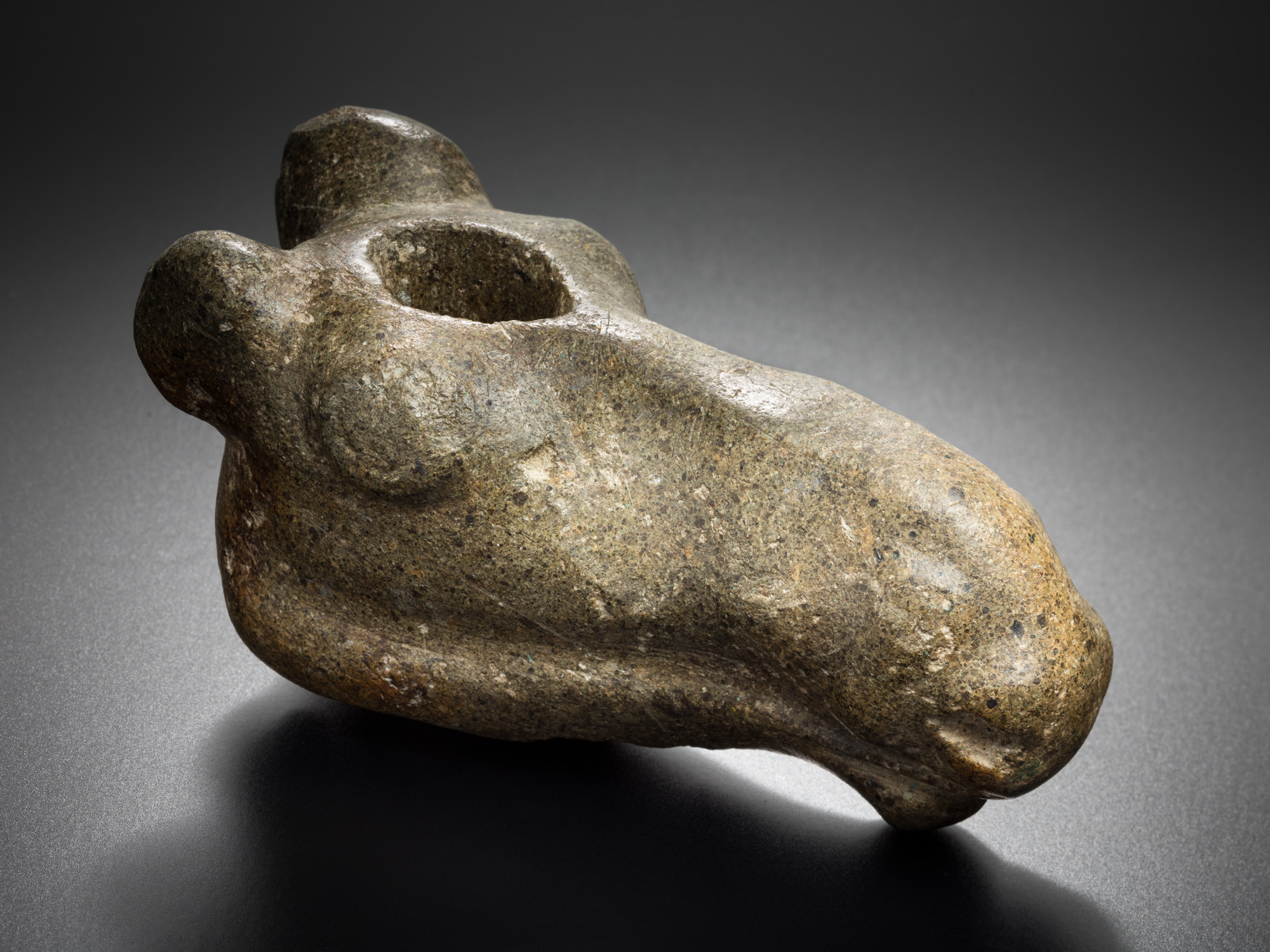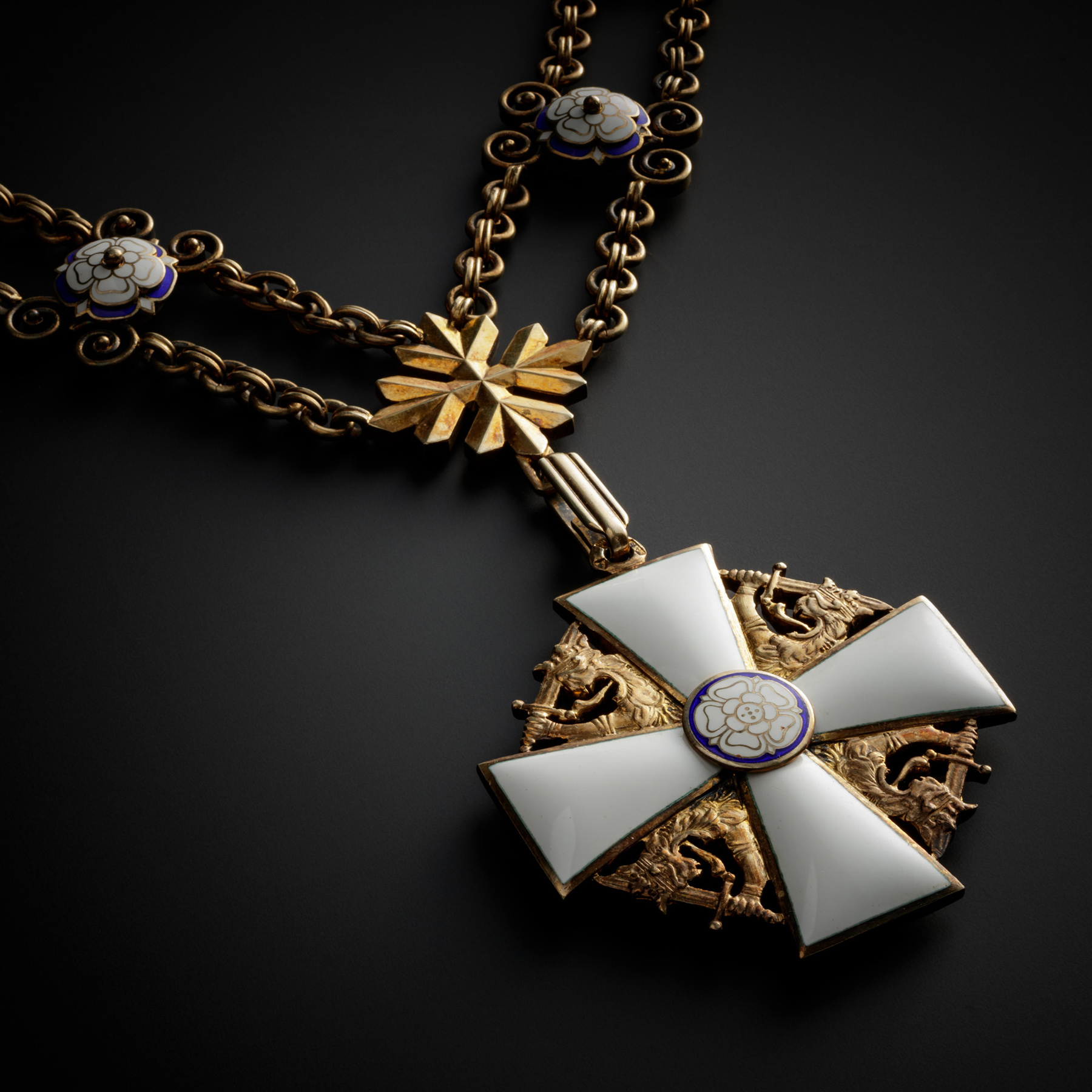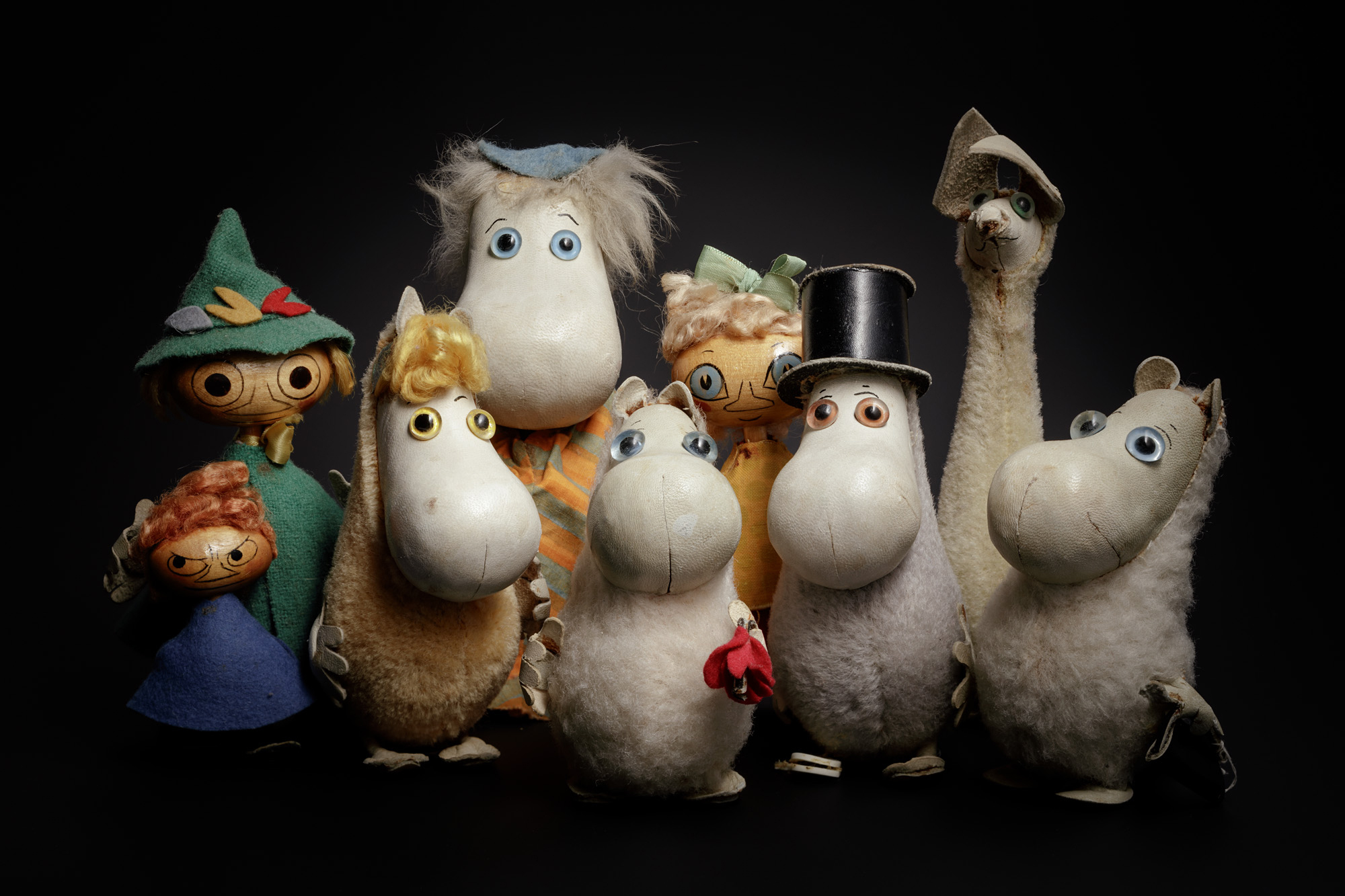Gems
Who are we and where do we come from? The study of the past seeks to answer the eternal mystery of existence. The three main exhibitions of the National Museum of Finland take the visitor from the past to the present through different perspectives.
The Prehistory exhibition deals with prehistoric times through origin, materials, movement, encounters and world view. The exhibition aims to highlight themes that unite people regardless of the era. The Otherland exhibition depicts an era when the country called Finland did not yet exist. The exhibition presents perspectives, fates and people’s lives from the region’s past from the 11th century, taking the visitor through the times of Swedish and Russian rule up to the early days of Finland’s independence. The Story of Finland exhibition shows how a small autonomous Grand Duchy of Russia became the welfare state of Finland. Eight themes take the story forward from the early stages of the state through the wars to democracy and the welfare state as well as the deep recession of the 1990s. At the end of the exhibition, we turn our eyes to this moment and the future – what aspects of this moment will be preserved for the future?
The three main exhibitions of the National Museum feature hundreds of objects. On these pages, we have selected a few of them for you to learn more about – do the choices tell more about the people of the past or about us?
Select an image for more information









Elk’s Head of Huittinen
Bronze axes from Tapaninkylä
President’s chain
Atelier Fauni’s Moomin characters
Bridal trinket crown
Maternity grant – protection for mothers and children
Brooch from Laitila
Eugen Schauman’s (1875–1904) shirt
Cross pendant from Taskula

Elk’s Head of Huittinen
In the Stone Age, the elk was an important animal that was depicted in both rock art paintings and objects. Objects decorated with elks’ heads had a special significance for people of the Stone Age. One of the most famous animal head weapons found in Finland is the Elk’s Head of Huittinen, which dates back to the Mesolithic Stone Age.
The elk’s head was found in a Stone Age settlement in Palojoki, Huittinen. Based on the radiocarbon dating of a stove, the settlement dates back to approximately 6100 BCE (cal). The artfully carved object was probably modelled after a killed young elk about one year old. It is made of soapstone, which is soft and easy to work on, and has been carefully finished by grinding. The sculpture has a hole for fitting a handle, so it may possibly have been used as a staff or club. However, due to its soft stone material, the object was not suitable for use as a weapon or tool, so it was probably a valuable item.
KM6292:1


Digital collection

Bronze axes from Tapaninkylä
Two narrow-headed bronze axes were found in Tapaninkylä, Helsinki, in the 1840s. The axes are among the finest bronze objects in Finland. They are decorated with various line, dot and spiral patterns. This type of bronze axe is called a palstave. These axes are of the Danish type and date from approximately 1500–1300 BCE based on typology. Palstaves have flanges above the blade for attaching a wooden handle. Palstaves were made from bronze by casting into a mould and were suitable for both working and fighting.
The axes of Tapaninkylä were found as a pair near the Bronze Age shoreline. Bronze objects sacrificed in pairs in Scandinavia and Central Europe have been associated with the Bronze Age cult of divine twins, but it is very uncertain whether the axes of Tapaninkylä can also be associated with this same belief.
KM72:1a-b



Digital collection

President’s chain
The Order of the White Rose of Finland was established on 28 January 1919. At the same time, the Cross of Liberty, founded in March 1918, was discontinued as it had been founded to reward people in wartime. According to a regulation approved by Regent of Finland Mannerheim on 16 May 1919, “The Order of the White Rose of Finland is awarded to citizens who have laudably served their homeland. Foreigners can also be rewarded with this Order.” The Order consists of five classes and three medals.
The Grand Cross of the White Rose of Finland with Collar is Finland’s highest decoration and is only awarded to the President of the Republic, who is the Grand Master of the Order. It has also been awarded to some foreign heads of state in connection with state visits. This Grand Cross belonged to President Urho Kaleva Kekkonen. The Grand Cross is always awarded with a breast star.
The decorations of the White Rose were designed by Akseli Gallen-Kallela. The rose theme comes from the heraldic roses of the coat of arms of Finland, and the colours are from the flag of Finland. Akseli Gallen-Kallela’s original Grand Cross included swastika symbols, but they were replaced in 1963 by spruce twig symbols. The spruce twigs were designed by heraldic artist Gustaf von Numers. President Kekkonen was the first to carry the new collar on Independence Day 1963.




Digital collection

Atelier Fauni’s Moomin characters
Tove Jansson created the Moomin world and its inhabitants during the war in 1939–1945. She had already invented the Moomin characters earlier, but during the war years, Tove wrote the first two Moomin books: The Moomins and the Great Flood, and Comet in Moominland.
In both books, the inhabitants of Moominvalley are threatened with disaster. The experiences of war and the fear, uncertainty and anxiety caused by it are reflected in the books. In the end, however, everything turns out fine and life goes on.
The main characters of the Moomin stories are Moomintroll, Moominmamma and Moominpappa. The events are built around their close family relationship, and the narrative is supported by caring for each other.
The Moomins and their friends have inspired a number of products. The Moomin family is surrounded by characters made by the Finnish Atelier Fauni in the 1950s: Snufkin, Little My, Snork Maiden, Mymble and Hemulen.
By 1971, Atelier Fauni had produced more than a million original, handmade dolls, which are popular among collectors. An authentic Atelier Fauni character can be identified by the manufacturer’s mark on its paw or tail end.
H2002056


Digital collection

Bridal trinket crown
Dressing a peasant bride in brilliant borrowed jewellery is an old custom adopted from the gentry, which can be dated back to at least the 17th century in Finland, and even to the Middle Ages for individual pieces of jewellery.
Even brides in a modest position were dressed in borrowed jewellery in the same way as young ladies of the gentry. It was the job of a special bride dresser to make the bride look as impressive as possible on her wedding day. In the 18th century, dressing up peasant brides was often the duty of wives of the clergy. Gradually, the task was given over to near-professional bride dressers. The bride was decorated with engagement jewellery and, on her head, she wore the most important symbol of all – the bridal crown.
The second half of the 18th century saw the rise of bridal crowns made of silk fabric or of paper like a wreath, decorated with various trinkets, paper ornaments and fabric flowers. In Kymenlaakso, the easternmost region where bridal crowns were traditionally used, trinket crowns developed into a half-moon shape in the second half of the 19th century and were decorated with staniol paper. In the western part of the country, the bridal crown tradition continued until the late 19th century.
This crown comes from Vehkalahti, Kymenlaakso.
K6816:146

Digital collection

Maternity grant – protection for mothers and children
The poor health and high mortality rates of mothers and newborns in Finland were a cause for concern in the first decades of the 20th century. It was hoped that they could be improved by means of legislation. The Maternity Grants Act was enacted in 1937. The distribution of grants to families of limited means started in the following year.
The war years 1939–1945 and the post-war shortages accelerated the distribution of the grant in the form of goods, and the maternity package contained several paper products. Since 1949, all women who have undergone a medical examination during their early pregnancy have been entitled to the maternity grant. Getting mothers and newborns into health care and maternity and child health clinics started a rapid decline in infant mortality rates in the 1950s.
The social situation and fashion trends of the time have been reflected in the maternity package. In 1993–1994, the contents were characterised by bold colours, soft cotton fabrics and reusable nappies. Attempts were also made to take paternity and the sharing of parenting duties into account in the contents.
The name of the maternity grant, which leaves out the father, has occasionally given rise to discussion, but no changes have yet been seen by the early 2020s. The annually changing designs and colour choices of the maternity package are also a topic of discussion. However, its popularity is guaranteed: approximately 70% of those entitled to the maternity grant take it in the form of the package.
H2002024

Digital collection

Brooch from Laitila
This silver brooch dating from the Viking Age was found in a field in Laitila in 1940. The person who found the large brooch thought it had come from a Russian plane during the war and put it on a fence pole. The brooch remained attached to the pole for a few months, until it was delivered to Turku and from there to the National Museum’s collections.
The brooch type probably originated in Ireland, from where it spread with the Vikings to Scotland, England and Scandinavia, and also to Finland. The Laitila brooch is the only brooch of this Irish type known in Finland. The brooch has also been called a thistle brooch due to its thistle-like spherical pins. The pins are hollow, flat on the back and decorated with ring patterns. There are also different patterns consisting of lines, triangles and dots along the brooch.
Brooches were used to fasten cloaks and other pieces of clothing. Large brooches were a visible indication of the owner’s wealth and position.
KM11243:1



Digital collection

Eugen Schauman’s (1875–1904) shirt
General Nikolay Bobrikov was appointed Governor-General of Finland in 1898. It soon became clear that Bobrikov’s task was to destroy Finland’s special status and Russify the Finns. In 1899, the Russification of Finland began under Bobrikov’s guidance. Bobrikov’s actions raised strong opposition in Finland and, in order to defeat this, he demanded a dictator’s powers in the spring of 1903. Civil servant Eugen Schauman shot Bobrikov in the staircase of the Senate in Helsinki on 16 June 1904. Right after the killing, he also shot himself. The case is Finland’s best-known political murder and can be interpreted as both terrorism and the desperate act of a patriot.
Schauman became a national hero and a patriotic martyr. The blood-stained clothes worn by Schauman were first taken to the Porvoo Museum. In fear of the Gendarmes, the clothes were moved to Sweden, but eventually, at Schauman’s father’s request, they were handed over to the National Museum in 1924.
H8365:4
Digital collection

Cross pendant from Taskula
Cross pendants in Finland date back to the era of the crusades, from the 11th century onwards. They can be divided by type into crucifixes, palmette crosses and tri-circular crosses. The cross pendant found in a man’s grave in Taskula (Maaria), Turku, in 1938 is a crucifix. Crucifixes depict the image of the crucified Christ, and the opposite side of the pendant may depict either the crucified or some other image of a saint. The other side may also be blank. The crucifixes found in Finland are equal-armed and slightly wider at the ends of the arms.
The cross pendant of Taskula is made of silver and has the image of the crucified Christ on one side, and the other side probably depicts the Virgin Mary, whose wrists are tied to the arms of the cross. At the ends of the pendant’s braided chain are delicate, animal head-shaped end tubes. Exceptionally, there is a small cross on the head of Christ. The influence of the Eastern Church has been seen in the treatment of the subject.
The subject of the cross pendant strongly refers to Christianity, but it is nevertheless unclear what its significance was for its wearer. It is possible that the pendant did not reflect the wearer’s religious conviction, but was regarded only as a precious necklace, used regardless of the symbolism associated with it.
KM11275:29
